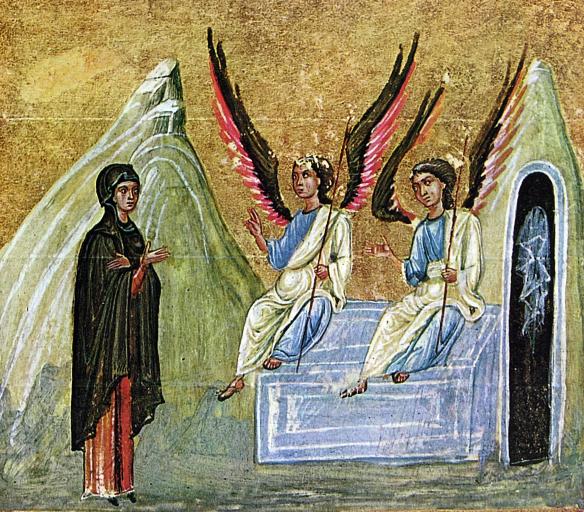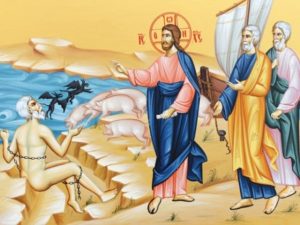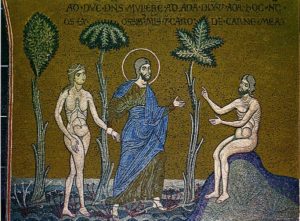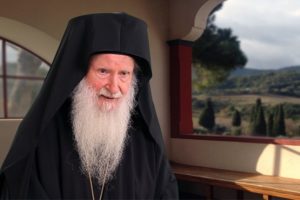Saint Mary Magdalene: Minimizing an Apostle’s Role – 2
23 July 2022The second mistaken identification of Mary Magdalene is with the anonymous adulteress (Jn. 7, 53-8, 11), whom Jesus saves from stoning with the famous words: “Let him who is sinless among you cast the first stone” (8, 7). This was the identification accepted by the famous actor and director Mel Gibson in his much-discussed film The Passion of Christ (for more on this identification, see Jane Schaberg, The Resurrection of Mary Magdalene: Legends, Apocrypha, and the Christian Testament, New York: Continuum, 2002, pp. 65–77, 82).
This process of the gradual de-assignation of the role of Mary Magdalene, with the mistaken readings and identifications, was completed in the 6th century by the declaration by Pope Gregory the Great (540-604 A.D.) who, in a homily, presented her as a model of repentance. Pope Gregory took a positive view of the anointing by the anonymous woman, but also assigned it to Mary Magdalene and claimed that the unguents she poured onto Christ’s feet were those she had previously used on her own body. At the same time, the seven demons were identified with the seven deadly sins. Pope Gregory wrote, in fact, that when Magdalene fell at Jesus’ feet, she transformed the multitude of her sins into virtues, so that she was able to serve God in total repentance (See Jane Schaberg, op. cit., p. 82). And so the myth became established that Mary Magdalene was a harlot with a heart of gold. This is the motif chosen by Dinos Christianopoulos in the work we mentioned above and also by a whole host of other poets and writers.
But it’s a strange and very interesting fact that, for some reason, this myth about Mary being a penitent harlot is to be found only in the tradition of the Western Church. In the Orthodox, Eastern tradition, she continues to be honoured for what she really was: equal to the apostles, the apostle of the apostles, a saint and a witness of the resurrection. There is another homily, also from the 6th century, by another Gregory, the Patriarch of Antioch, in which the risen Lord is reported to be addressing the women, including Mary Magdalene, who “ran to the tomb”, with the following words: “Tell my disciples the mysteries you’ve seen. You’ll be the first apostles to the apostles. And let Peter, who denied me, learn that I’m able to make women apostles, too” (see J. N. Birdsall, “Gregory of Antioch: Homilia in S.Τheophania, CPG 7385– Gleanings of Text and Theme,” JTS 60 vol. 2 (2009), pp. 531-7).
This patriarch and saint of the Orthodox Church extends the historical role of Mary as an apostle, which is to be found in John’s Gospel, and naturally links it to her experience at the first appearance of the risen Christ (“And on the first day of the week, Mary Magdalene came to the tomb early, while it was still dark and saw that the stone had been taken away from the tomb”, 20, 1 and 11-19. Verses 2-10 are obviously an addition to the more ancient core of the text, since they obviously spoil the structure of the narrative). In contrast to the picture in the Gospel according to Saint Luke, the fourth Gospel clearly presents Magdalene as the first witness of the resurrection, the chief event in the whole of Divine Providence.
This positive role, which, historically, that is on the basis of historical evidence, was played by Mary Magdalene, in the Gospel according to Saint John, was thereafter reinforced by certain Christian circles, who actually elevated her memory and honoured it rather more than was appropriate. The apocryphal “Gospel of Mary”, which was published as late as 1955, is the product of one such ancient- and, for some, marginal- Christian community. In this apocryphal Gospel, and, indeed, in most of the apocryphal texts of the New Testament (although some of these do retain a historical nucleus in their narratives, see the Gospel according to Thomas, to Philip, Faith-Wisdom), the image of Mary is the following: a) she had a prominent position among Jesus’ disciples; b) she survived as a character, not as a memory, even at a time and in a culture that was intensively male-orientated and one which, for many, had a strongly patriarchal ideology; c) she was distinguished for her boldness and spoke freely; d) she clearly played a leading role, even in the presence of the male apostles (whom she called her “brothers”); e) she was a person who was blessed to receive and interpret divine images; f) she was praised for her sound and profound understanding of the divine teachings; g) she is recognized as being a close and familiar disciple of Jesus; h) she has no hesitation in facing up to, and, in certain instances, coming into direct conflict with one or more of the other apostles; i) Jesus defends her.
Lots of these nine characteristics are also to be found in other, non-canonical (apocryphal) texts. Of course, in some of the apocryphal texts from the time of the nascent Christian tradition, her role is altered in a negative fashion, or her name is removed from narratives in which, in other texts, she played a leading role. All of this stopped after the 6th century, and then, in the Middle Ages in the West, we have the appearance of the myth of Mary as a symbol of eroticism and sexuality.
The crucial question which scholarship has to answer is whether the portrait of Mary Magdalene as a leading figure in the early Church represents the actual historical reality. It’s more than likely that something of the sort was the way things really were, especially if we take into account the important position she continues to occupy in the Eastern liturgical and hagiographical tradition. Certain scholars of the N. T. in fact claim that she may have been among the feminine leading personalities to whom Saint Paul addresses warm greetings in the wonderful chapter 16 of his epistle to the Romans (“Greet Mary, who has worked hard among you”, 16. 6). This, of course, is no more than a supposition. But there’s absolutely no historical evidence, or even a suggestion, that she was ever a harlot, lover or companion of Jesus. On the contrary, it’s very much the case that she was a prominent disciple of His, the apostle of the apostles, and that, in the course of history, these features of her life have been deliberately marginalized or even successfully expunged- at least until today, when scholarship has shown the true significance of the “Historical Magdalene”.
Note: Taken from an article by Prof. Petros Vasileiadis, of the Theological School of the Aristotle University of Thessaloniki, website http://blogs.auth.gr/moschosg.












